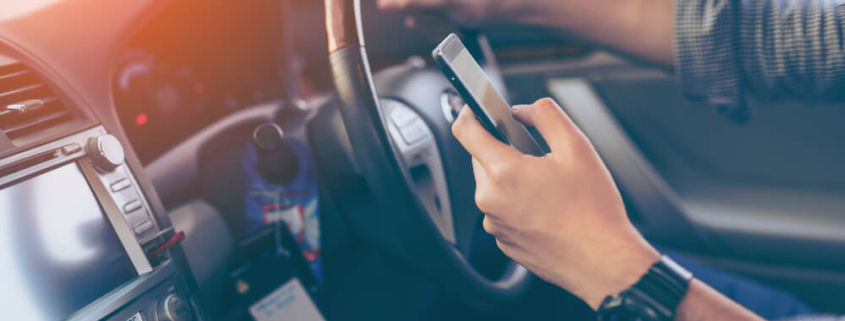Why is Texting While Driving so Dangerous?
Distracted driving has always been a problem for motorists, but the advent of smartphones has made things far worse. At any given moment throughout the day, approximately 660,000 drivers in United States are attempting to use their cell phones while they are behind the wheel. Smart phones allow us to stay connected all the time, and the compulsion to send a text, catch up on your email, and read social media posts can be very addicting.
Distracted Driving Statistics
Here are some alarming statistics that show how dangerous texting while driving and other types of distractions can be:
- Cell phone use is responsible for approximately 1.6 million car crashes in the US each year.
- Distracted driving claims the lives of nine Americans every day on average, or approximately 3,500 per year.
- An estimated 400,000 individuals are injured in crashes that involve distracted drivers each year.
- Distracted driving costs our society approximately $40 billion per year.
- Approximately one out of every four auto accidents in United States is caused by texting while driving.
- Texting while driving is six times more likely to cause an accident than driving drunk.
- 35% of teen drivers admit to having sent a text while driving (the real number is most likely much higher).
- Teen drivers are four times more likely than adults to get into a crash or near crash because of cell phone use.
What Makes Texting while Driving Worse than Other Distractions?
Most people intuitively understand that sending and receiving text messages while driving is an extremely dangerous practice. In fact, 94% of all drivers support a ban on texting while driving, and nearly 75% support a ban on the use of handheld cell phones. So, what makes texting so much worse than other types of distracted driving?
There are multiple forms of distracted driving:
- Visual: Any distraction that takes your eyes off of the road, such as an attractive billboard that catches your attention.
- Manual: Any distraction that causes you to take your hands off of the wheel or your feet off of the break, accelerator, or clutch, such as eating or handling a passenger.
- Auditory: Any sounds that you hear that are not related to driving, such as your car radio or someone you are talking to on your cell phone.
- Cognitive: Anything you may be thinking about other than driving, such as a topic you are talking to someone in the car about.
Most distractions fall into one or two of the above-mentioned categories, but texting while driving and other types of electronic activity on smartphones cause motorists to be distracted in at least three different ways; visually, manually, and cognitively. In some cases, sending or receiving a text can cause an audible distraction as well.
The end result of sending or receiving a text while driving is that the driver’s entire focus is taken off of the road where it belongs. This is why you will often see cars stopped at stop lights after the light turns green or cars that straddle the center line and/or weave back and forth between lanes. To help illustrate just how dangerous texting while driving is, the CDC says that looking down at your phone for just five seconds to send or receive a text is roughly the equivalent of driving the entire length of a football field blindfolded.
Despite overwhelming agreement that the practice should be banned, the majority of drivers still admit to having done it. And although the states have banned this practice, the penalties are not harsh enough to deter a lot of drivers from thinking they can sneak a text every now and then.
The news is not all bad, however. Technology got us into this mess, and it is helping get us out as well.
There are now numerous smart phone apps that can be used to prevent teens from texting while driving, and to keep adults from seeing their text messages until after their trip is over. In addition, voice activated texting, though not a perfect alternative, is far better than manually sending a text by using your eyes and fingers. Hopefully, technological breakthroughs will help reduce the number of future accidents and fatalities that are caused by texting while driving.
Injured in a Distracted Driving Accident in South Carolina? Peake & Fowler is Here to Help
If you or someone close to you suffered injury at the hands of a distracted driver, you deserve to be fully compensated. At Peake & Fowler, we have extensive experience successfully representing clients who have been injured in all types of auto accidents in South Carolina, and we work closely with our clients to provide the strong personalized representation they need and deserve. Although court access has been restricted as our nation continues to deal with the effects of the unprecedented coronavirus pandemic, we are still fully operational and ready to serve your legal needs.
For a free consultation with a member of our legal team, message us online or call our office today at 803-788-4370.




